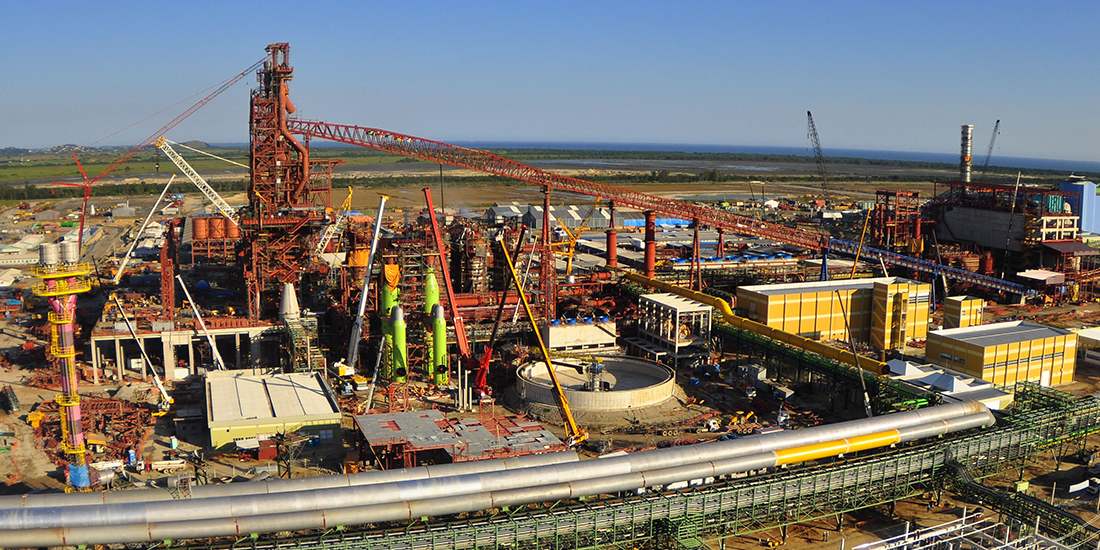
When designing or optimising a blast furnace plant, Paul Wurth approaches today’s challenges such as raw materials availability, waste generation, air pollution, energy efficiency and CO2 emissions. Together with our customers, we are always looking for improvement opportunities by considering the specific aspects of upstream and downstream operations.
Some examples of proven, state-of-the-art solutions and technologies available:
Stockhouse design including a return-fines philosophy allows the operators to practice the dedicated use of nut coke and sinter fines in the charging batch formation.
Ground granulated blast furnace slag (GBFS) is a commonly accepted and sought-after replacement material for virgin natural resources in cement production. Paul Wurth’s INBA® slag granulation technology produces high-quality GBFS sand and makes slag to be part of an inter-sectorial circular economy. The cold-water INBA system with steam condensation gives full pollution control on H2S emission, it has been recognised as a Best Available Technology (BAT).
On the blast furnace top gas side, Paul Wurth’s Axial Cyclone removes about 85% of the dust in the first, dry separation step. This coarse material discharged from the cyclone is a Fe/C matrix, which directly can be returned into the main ironmaking cycle via the sinter plant. The comparatively small quantities of residual sludge extracted from the scrubber contains a high ration of lead and zinc. Paul Wurth’s propriety CIROVAL® technology will be used for separating this sludge into a Fe/C fraction and into a ZnO/Pb product, both to be recycled in different ways. Blast furnace sludge basins will become a picture of the past.
Prior to the use of blast furnace top gas’ calorific value in combustion processes, the use of the Top Gas Energy Recovery Turbine (TRT), an expansion turbine installed downstream of the gas cleaning equipment, can transform the potential energy of the top gas into electricity. Typical combustion applications of blast furnace gas in the blast furnace plant itself are heating of hot stoves and drying gas generation for the production of pulverised coal. The physical heat of stoves waste gas is used for preheating combustion gas and air thus improving efficiency further. External applications of combustible blast furnace gas (or its mixes with converter gas and coke oven gas) are the reheating furnaces in rolling mills or the production of steam for district heating.
So, material and energy efficiency have been in the focus of our technologies for some decades already. The call for circular economy and – especially – for carbon dioxide emission reduction brought us on the path to go even further in that direction.